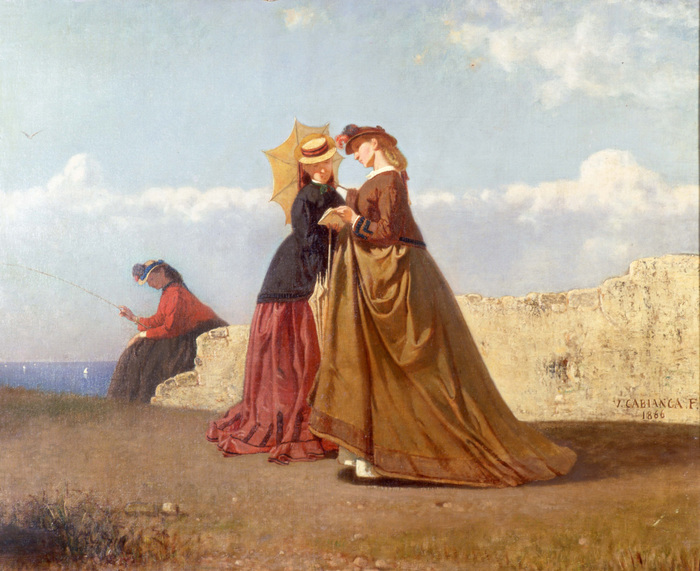PADUA - 'It is in that suspension between clear and indefinite that lies the charm of the Macchiaioli, men suspended on the edge of an era that contained one that had just ended and anticipated another to be discovered.
Revolutionaries even in spite of themselves, whether they were of a jolly or polemical nature, they were basically indifferent because time worked for them, helping them in their intelligence to create extraordinary masterpieces now - over 100 - all together to admire, between history, reality and feelings, in the exhibition dedicated to them at Palazzo Zabarella in Padua from 24 October to 18 April: '' I Macchiaioli.
Masterpieces of the Rising Italy ''.
'' The Macchiaioli were courageous and unconventional men - explains to ANSA Fernando Mazzocca who curated the exhibition together with Giuliano Matteucci - who fought to affirm an art different from the official one, the one that was appreciated by critics and the public. They wanted to renew the vision of reality and for this they fought an aesthetic but also a political and moral battle to create Italy with the Risorgimento.
They have made their contribution to a new and fairer society but also to beauty and universal themes.
For this reason the Macchiaioli, in this moment we are experiencing, are an injection of vitality and energy.
We need it. ''
In fact, the exhibition is a real act of courage with the pandemic looming but the idea is precisely to rewrite the history of this movement in some way through the human story of '' friends '': collectors, art historians or simple lovers of beauty who have accompanied their journey.
'' The very interesting thing '', Mazzocca explains again speaking of the works collected here - ranging from famous authors such as Silvestro Lega, Giovanni Fattori, Giovanni Boldini, Telemaco Signorini, and others less known, but no less significant, such as Adriano Cecioni, Odoardo Borrani, Raffaello Sernesi, Vincenzo Cabianca - is that from their works a very varied world emerges that is a bit the mirror of the Italian society of the time, with women often central.
Some very sensitive like Virginia Batelli who was the family and love of Lega who dedicated the poetic paintings to her ''.
The rest of the sections of the exhibition are dedicated to the men and women who supported them: Critics and writers, Friends and patrons, First collectors, Amateur painters, Merchants, and finally The Angiolini collection.
'' It is an extraordinary opportunity - explains Mazzocca - to see the movement through friends.
For example, Diego Martelli deserves a separate mention, a great critic who, among other things, had the merit of having understood the Impressionists first.
His attempt is to unite painters who painted differently in his residence in Castiglioncello in the upper Maremma.
Here they confronted each other better, they tried their hand at the same themes together in a different way to create a common language.
The rooms dedicated to various types of collectors, from the second half of the nineteenth century to the early twentieth century, are a great adventure.
Then there is a time jump to an immediate post-war collection, that of the Angiolini, the only one of the twentieth-century collections to have remained intact.
Here he will be seen for the first time with his masterpieces by Fattori and Signorini ''.
In short, Mazzocca concludes about the coincidence in Padua with the great exhibition on Van Gogh: `` in these moments when the exhibitions are not so numerous and it is more risky to move, one comes to Padua to see two things safely two great exhibitions both levels although very different.
Van Gogh was also much loved because he was courageous and painted universal themes.
We must help ourselves ''.
(HANDLE).

